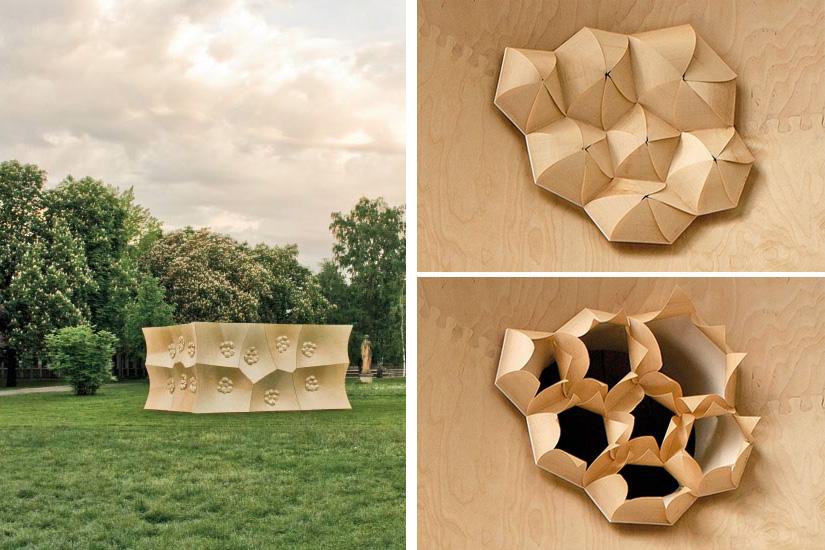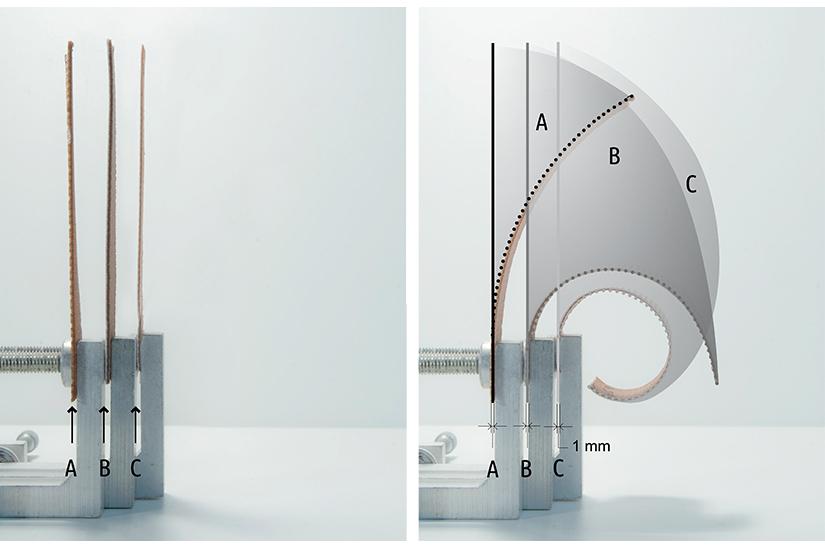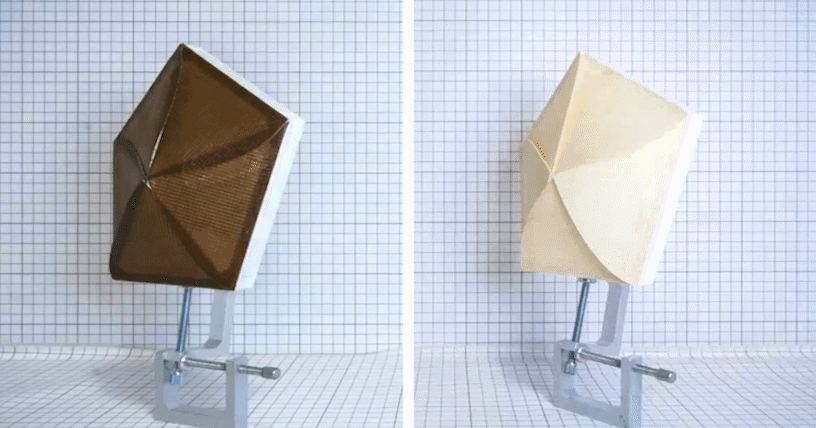Biological systems often have the ability to adapt to their environments. They harness external atmospheric stimuli, and as a result, triggers are activated which might result in kinematic shape or chemical changes to a given system or plant.
Performance challenges – when pitted against a series of resource limitations like humidity or lack of water – can provoke complex and multi-layered structural changes in plants, and nature regularly makes use of various strategies and materials to deal with those challenges.
 For instance, plant cones adapt to their environment by interacting with the seasons and harnessing atmospheric input which leads to changes in their shapes, and those changes mean a cone can protect or release seeds.
For instance, plant cones adapt to their environment by interacting with the seasons and harnessing atmospheric input which leads to changes in their shapes, and those changes mean a cone can protect or release seeds.
University of Stuttgart Professor Achim Menges, a registered architect and the founding director of the Institute for Computational Design, is also a visiting professor in architecture at Harvard University, and his practice and research are devoted to creating integral design processes at the nexus of “morphogenetic design computation, biomimetic engineering and computer aided manufacturing.”
The processes of morphogenesis in nature is the biological process that causes an organism to develop a shape. It’s one of three fundamental elements of developmental biology beside the control of cell growth and cellular differentiation, and the process controls the organized spatial distribution of cells during embryonic development.
Menges’ work has led him to collaborate with structural engineers, computer scientists, material scientists, and biologists to seek solutions to create “hygroscopic components” of the 3D printed material system to trigger shape changes in materials in response to the relative humidity or temperature within the environment.
Calling the result of their work on what they refer to as Biomimetic Responsive Surface Structures “the transfer of biological principles to architectural systems,” what comes out of the process are hygrocopically-actuated wood-veneer composite systems like those used at the HygroScope Installation in Paris and the HygroSkin Pavilion in Orleans.
It comes down to using 3D printing technologies to take on design challenges at the material level.
Working alongside scientific developer David Correa, Oliver David Krieg, and Steffen Reichert, Menges uses computational design and robotic fabrication methods to integrate the elastic and hygroscopic behavior of wood. The team says it’s wood’s fibrous structure, relatively low stiffness, and high structural capacity which allows them to create these fascinating, self-forming mechanisms. By programming the formally articulated material, they’ve created a climate responsive architectural system.
The complex interaction between the various programmable parameters of the structures lets the designers manage a series of complex, four-dimensional articulations, and the result is an architecture with the capacity to sense, actuate, and react to climatic changes. They say their systems represent “a novel conceptual and practical framework for truly programmable environmentally responsive architectural systems.”
While conventional engineering systems rely on sets of discreet, functional components like sensors, actuators, and controllers, their biological-like systems rely on differentiated materials and structured material systems which act in concert – and in a single harmony – as a combined system which mimics those sensor, actuator, and regulator reactions to create fantastic forms which slowly open, close, and morph like flowers or leaves.


Let us know what you think about this 3D printed, reactive material in the Bio-Inspired Architectural Materials thread at 3DPB.com.
Subscribe to Our Email Newsletter
Stay up-to-date on all the latest news from the 3D printing industry and receive information and offers from third party vendors.
You May Also Like
Gorilla Sports GE’s First 3D Printed Titanium Cast
How do you help a gorilla with a broken arm? Sounds like the start of a bad joke a zookeeper might tell, but it’s an actual dilemma recently faced by...
Nylon 3D Printed Parts Made More Functional with Coatings & Colors
Parts 3D printed from polyamide (PA, Nylon) 12 using powder bed fusion (PBF) are a mainstay in the additive manufacturing (AM) industry. While post-finishing processes have improved the porosity of...
$25M to Back Sintavia’s Largest Expansion of Metal 3D Printing Capacity Since 2019
Sintavia, the digital manufacturing company specializing in mission-critical parts for strategic sectors, announced a $25 million investment to increase its production capacity, the largest expansion to its operations since 2019....
Velo3D Initiates Public Offering in a Bid to Strengthen Financial Foundations and Drive Future Growth
Velo3D (NYSE: VLD) has been among a number of publicly traded 3D printing firms that have attempted to weather the current macroeconomic climate. After posting a challenging financial report for 2023,...

































